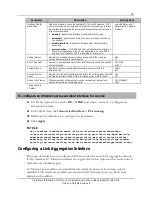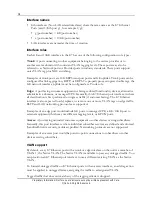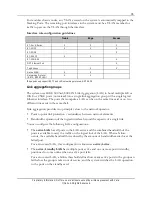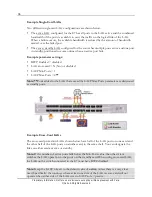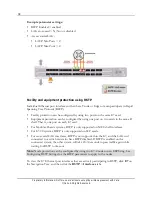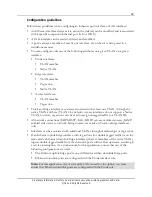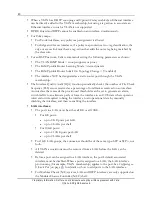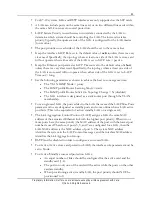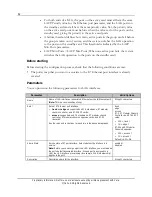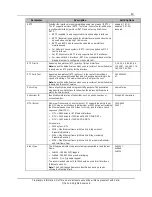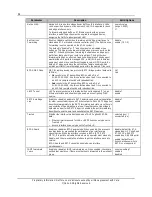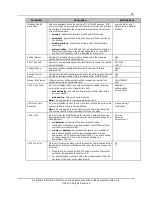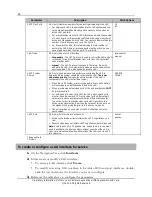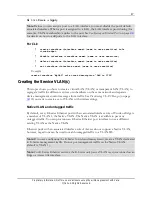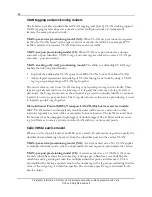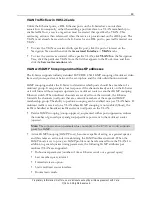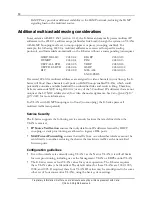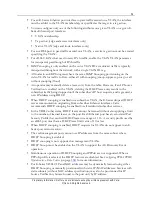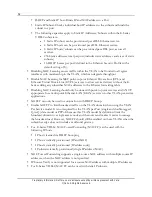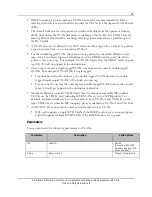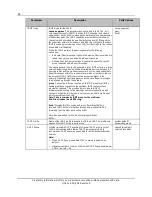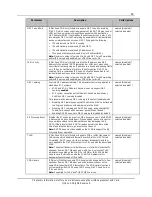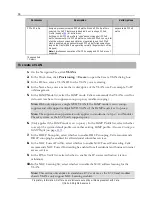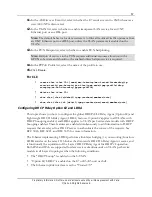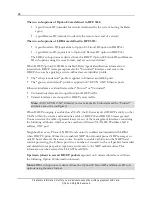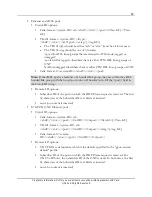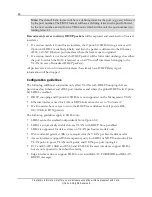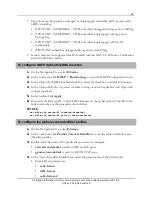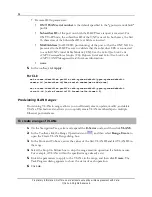
47
Proprietary Information: Not for use or disclosure except by written agreement with Calix.
© Calix. All Rights Reserved.
4.
Click
Create
or
Apply
.
Note:
Before you can assign a port to a LAG interface, you must disable the port's default
associated interface. When a port is assigned to a LAG, the LAG interface provisioning (for
example, VLAN membership) applies to the port. See
Configuring an Ethernet Port
(on page
21
)
for details on how to add ports to the LAG interface.
For CLI:
create interface <interface name> (name is case sensitive) role
<trunk|edge>
disable interface <interface name> (name is case sensitive)
delete interface <interface name> (name is case sensitive)
set interface <interface name> (name is case sensitive)
Example:
create interface “MyLAG” role trunk description “LAG to 3750”
Creating the Service VLAN(s)
This topic shows you how to create a virtual LAN (VLAN) or transparent LAN (TLAN) to
segregate traffic for different services or subscribers on the same network and separate
device management control messages from traffic. See
Provisioning VLAN Ranges
(on page
62
) if you want to create a set of VLANs with similar settings.
Native VLAN and untagged traffic
By default, every E-Series Ethernet port with an associated interface role of Trunk or Edge is
a member of VLAN 1, the Native VLAN. The Native VLAN is available to pass any
untagged traffic. You can provision an E-Series Ethernet port interface to use a different
existing VLAN as the Native VLAN.
Ethernet ports with an associated interface role of Access do not support a Native VLAN,
however, tag actions can be used to match untagged traffic to a VLAN ID.
Note:
If you are configuring the E-Series for in-band management, create a VLAN dedicated
to E-Series management traffic. Do not put management traffic on the Native VLAN
(default is VLAN 1).
Note:
For E-Series Ethernet services, the E-Series only passes VLAN tags provisioned on an
Edge or Access link interface.

